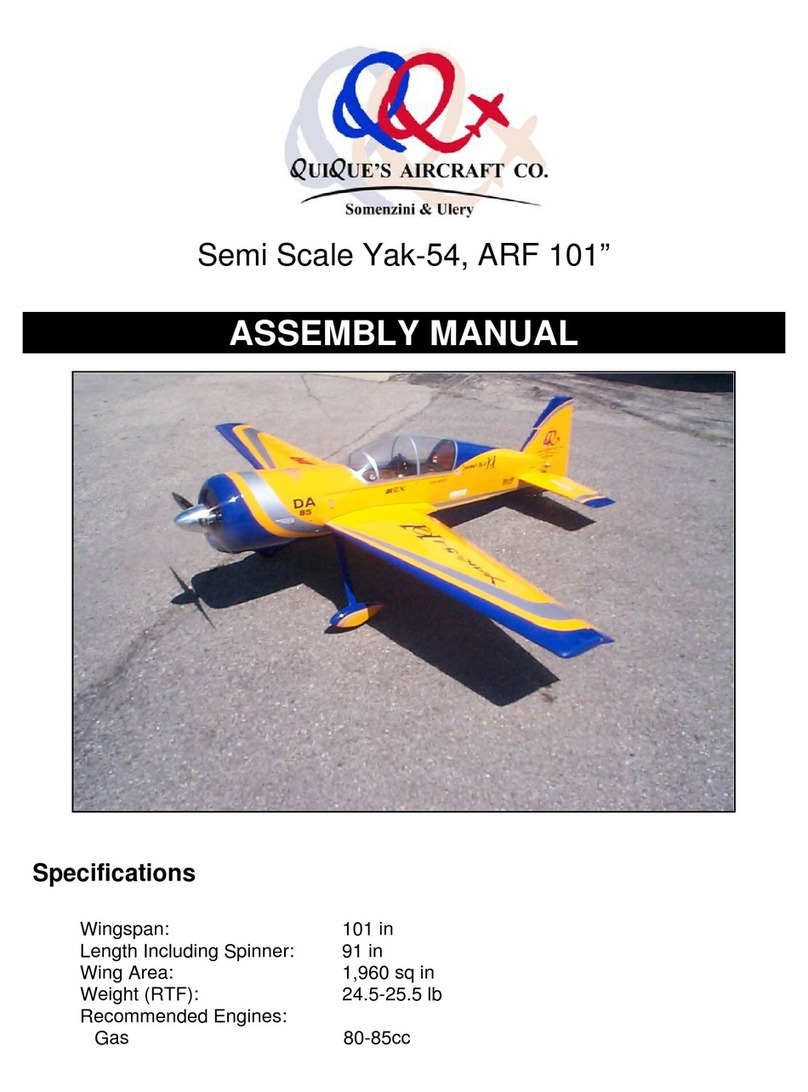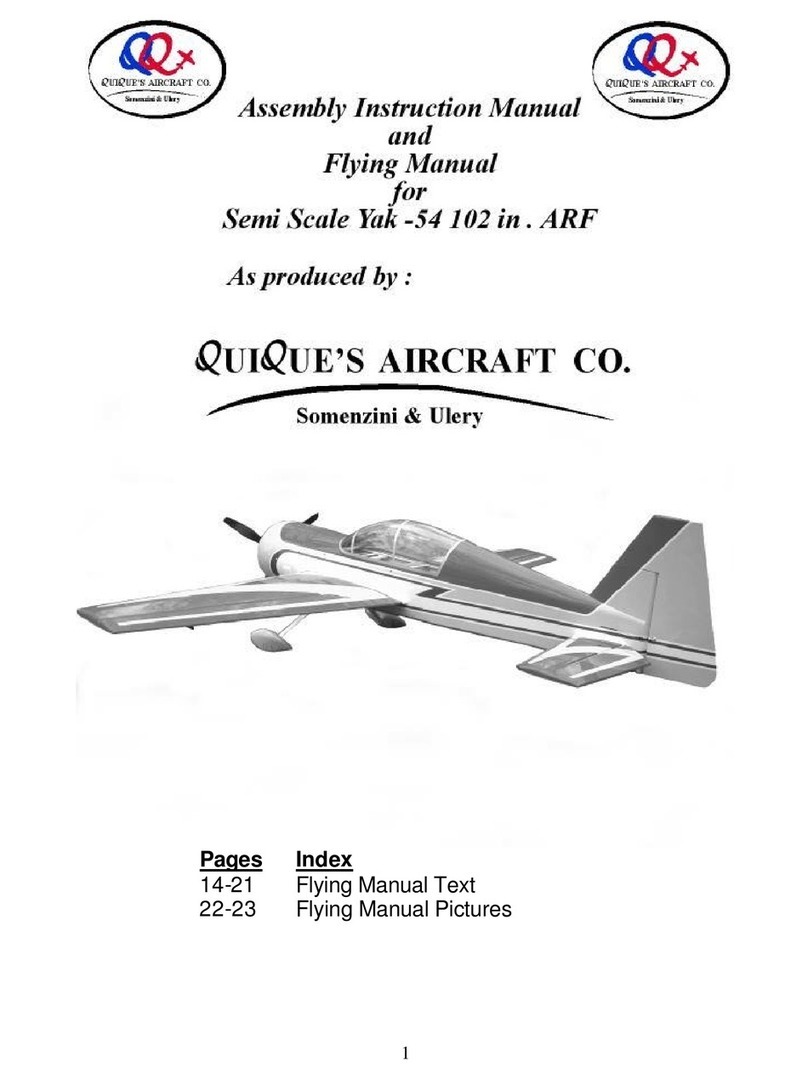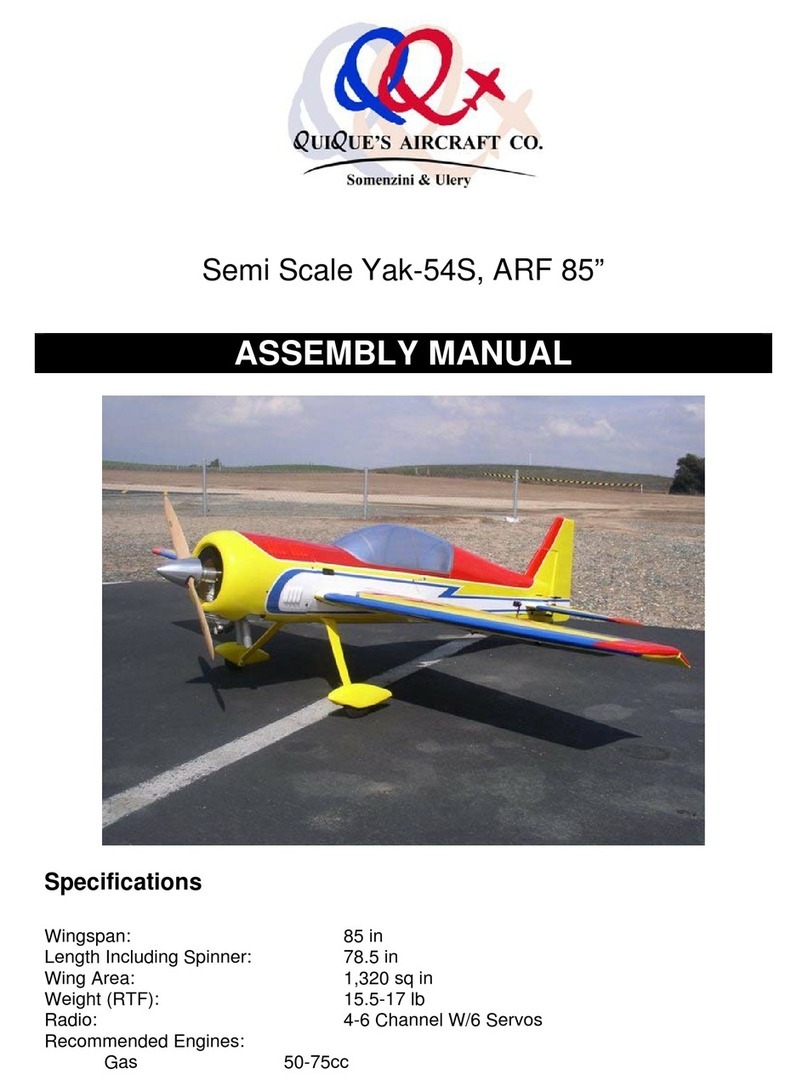
Servo Selection
The servos used for the control surfaces of this Yak-54 are as follows:
Ailerons (4), JR 8611a
Elevator (2), JR 8611a
Rudder (2), JR 8611a
Throttle, any standard analog servo
Make sure you use same or equivalent torque servos that are digital.
Please do not risk your plane by using low torque or analog servos.
This Yak-54 has large control surfaces and fully capable of any maneuvers that a
pilot is able to perform. Therefore, using weak servos will increase chance of
flutter and may result in a crash.
Using the Manual
This manual is divided into sections to help make assembly easier to understand
and to provide breaks between each major section. Remember to take your time
and follow the directions.
Warning
I am sure that for the most of you this is not your first venture into the World of
flying radio-controlled aircraft. For those of you that may be entering this exciting
sport early on in your modeling experience and for you with vast experience, I
think we all need to be reminded of the possible dangers that are associated with
a high performance aircraft of this type. This is not a toy. This aircraft must be
flown in a safe manner at all times. You should always do a preflight check
including control surfaces hook-ups, radio operation, (please refer to your radio
equipment instruction manual for range checks and other pertinent related
information) and all other checks relating to the safe operation of this aircraft.
Warranty Information
Quique’s Aircraft Company guarantees this kit to be free from defects in both
material and workmanship at the date of purchase. This warranty does not cover
any parts damaged by use or modification. In no case shall QQAC’s liability
exceed the original cost of the purchased kit.
Customer is responsible to check all the components upon receiving of his
aircraft and notify QQAC in case of any visible damage to any parts. Customer
should not proceed with building the aircraft as some damages can compromise
the integrity of the structure of the aircraft, resulting in more damages. In no case
will such damages be covered by QQAC.
8































